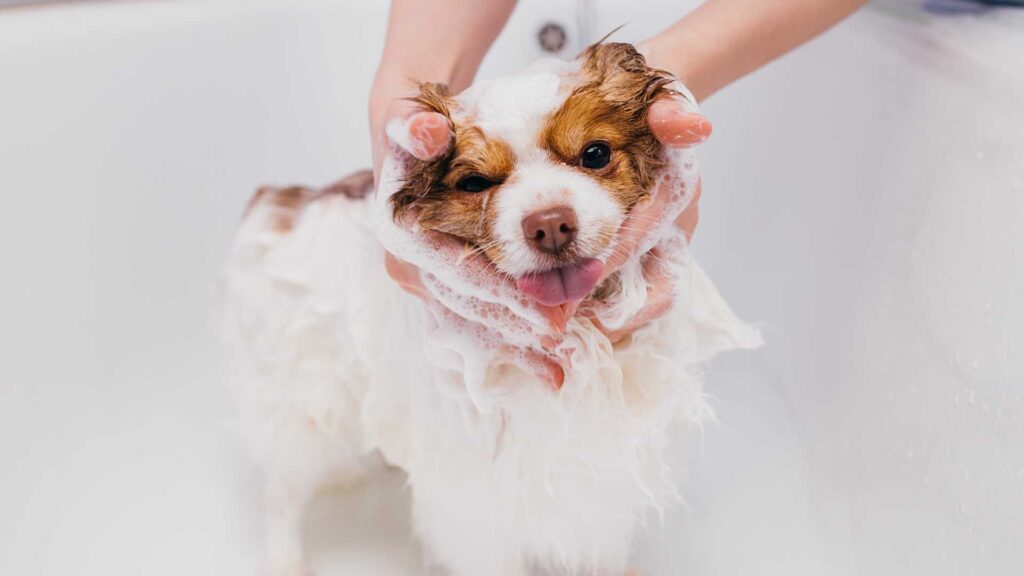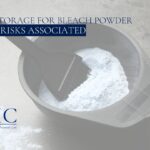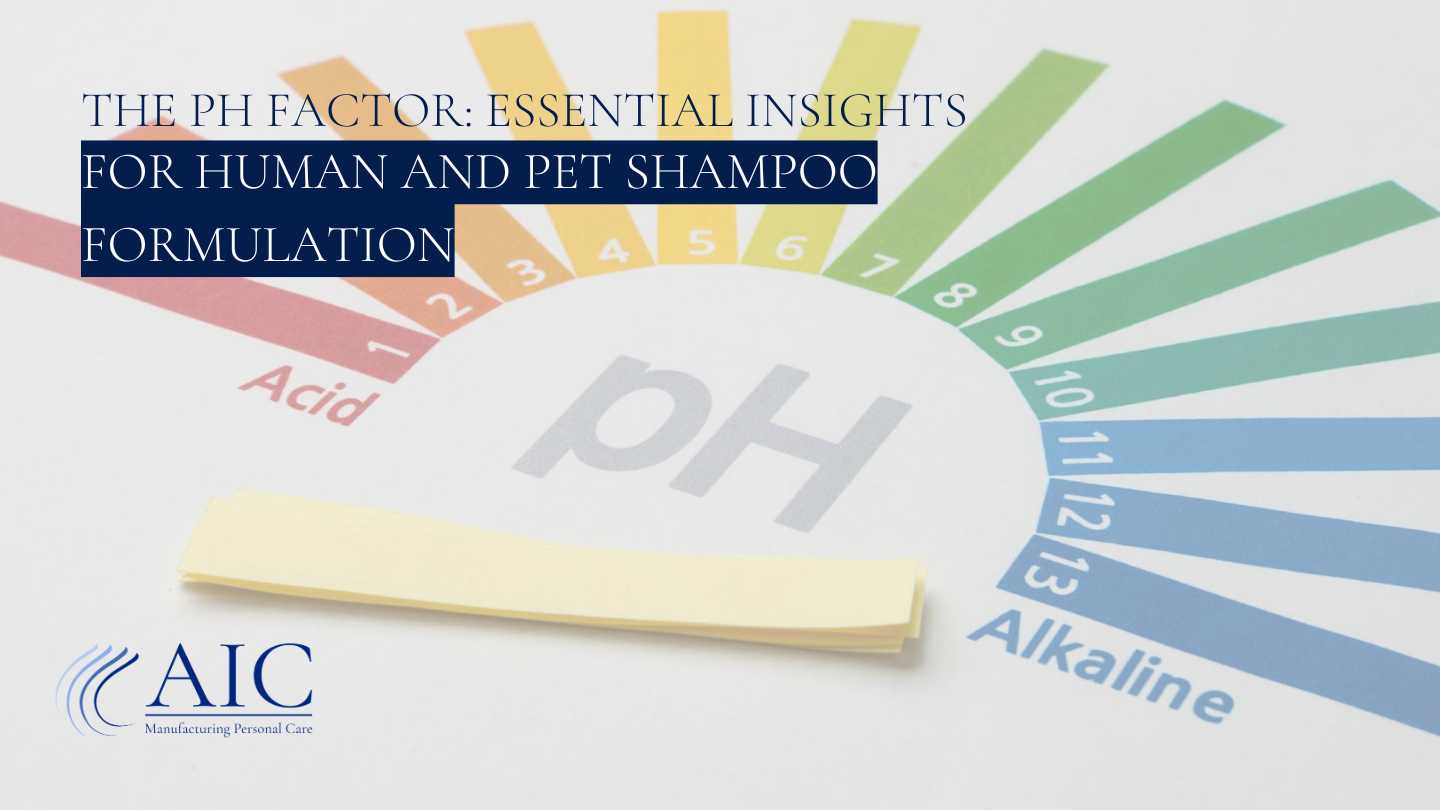As industry professionals, cosmetic chemists, product developers, salon owners, and brand managers, you understand that crafting exceptional hair care products goes far beyond pleasant fragrances and attractive packaging. At the heart of effective shampoo formulation, for both humans and our beloved animal companions, lies a critical, often underestimated, scientific principle: the pH factor.
Understanding and meticulously controlling the pH of your shampoo formulations isn’t just a technical detail; it’s fundamental to product performance, user safety, and ultimately, brand reputation. At AIC, we pride ourselves on being a trusted one-stop shop for personal care product development, manufacturing, and branding, and our commitment to high-quality products begins with a deep dive into the science, including the delicate balance of pH.
Why pH Matters So Much
The term pH refers to the “potential of hydrogen,” a scale from 0 to 14 that measures the acidity or alkalinity of a solution. A pH of 7 is neutral, anything below 7 is acidic, and anything above 7 is alkaline (or basic).
The skin and hair of both humans and pets possess a natural pH, known as the “acid mantle,” which acts as a protective barrier against external aggressors like bacteria, fungi, and environmental pollutants. When this delicate balance is disrupted by products with an inappropriate pH, it can lead to a host of problems, from irritation and dryness to impaired barrier function and even susceptibility to infections.

The Ideal pH for Human Hair and Skin
For humans, the skin generally has a slightly acidic pH, typically ranging between 4.7 and 5.75. The hair shaft itself is even more acidic, with an isoelectric point (the point where the hair has a neutral charge) around 3.67. This natural acidity helps to keep the hair cuticles flat and smooth, promoting shine, strength, and preventing frizz.
When a human shampoo has a pH that’s too high (alkaline), it can cause the hair cuticles to swell and lift, leading to tangling, frizz, and a dull appearance. Over time, this can also contribute to breakage and damage. Conversely, a shampoo that is too acidic, while less common, can strip essential oils and lead to an overly dry scalp.

The pH Factor for Our Furry Friends
Now, let’s talk about our pets. While the general principle of pH balance remains the same, the specific ideal pH ranges differ significantly for humans, and this is a crucial point for pet shampoo formulators. The skin pH of dogs typically ranges from 6.0 to 7.5, making it more alkaline than human skin. Cats have a slightly wider range, generally between 6.5 and 7.5.
Using a human shampoo on a pet, which is usually formulated for a more acidic pH, can severely disrupt their skin’s natural barrier. This can lead to dryness, itching, irritation, and even skin infections, as their protective acid mantle is compromised. This is why specialised pet shampoos are not just a marketing gimmick; they are a necessity for the health and well-being of the animal.
The Science of Balancing pH in Formulations
Achieving the perfect pH in a shampoo formulation involves careful selection of raw materials and precise adjustment. Formulators often use pH adjusters, such as citric acid to lower pH or sodium hydroxide to raise it, to bring the final product into the desired range. Buffering agents are also employed to help maintain the pH stability of the product over its shelf life, preventing significant shifts due to storage conditions or interactions with packaging.
For industry professionals, understanding the interaction of ingredients with pH is paramount. Surfactants, preservatives, and even fragrances can all influence the final pH of a product. A well-formulated shampoo not only delivers effective cleansing but also supports the natural physiology of the skin and hair it’s designed for.
Here’s a quick overview to help visualise these differences:
Aspect | Human Shampoo Formulation | Pet Shampoo Formulation |
Target Skin pH | 4.7 – 5.75 | Dogs: 6.0 – 7.5. Cats: 6.5 – 7.5 |
Hair Cuticle Impact | Maintains flatness, shine | Less acidic to avoid over-stripping the pet’s natural oils |
Primary Goal | Cleansing, conditioning, and maintaining scalp health | Cleansing, deodorising, and protecting the pet’s unique skin barrier |
Risk of Imbalance | Dryness, frizz, irritation, and damage | Dryness, itching, irritation, infections |

AIC's Commitment to Quality and Innovation
At AIC, our expertise in hair care product development is deeply rooted in scientific understanding. We don’t just mix ingredients; we meticulously craft formulations with the pH factor and other critical parameters in mind. Our established manufacturing facility and experienced R&D Team ensure that every product we develop and produce meets the highest standards of quality, safety, and efficacy.
Whether you’re looking to develop a new line of human shampoos that gently cleanse and protect, or specialised pet shampoos that cater to the unique needs of different animal companions, AIC is your trusted partner. We understand the nuances of pH balance and how it contributes to superior product performance.
Ready to innovate your personal care product line with formulations that truly perform?
Explore AIC’s comprehensive offerings in hair care product development, manufacturing, and branding by visiting our website. Let us help you bring your vision to life with high-quality, scientifically sound products that delight your customers and their beloved pets. Or contact us today.




